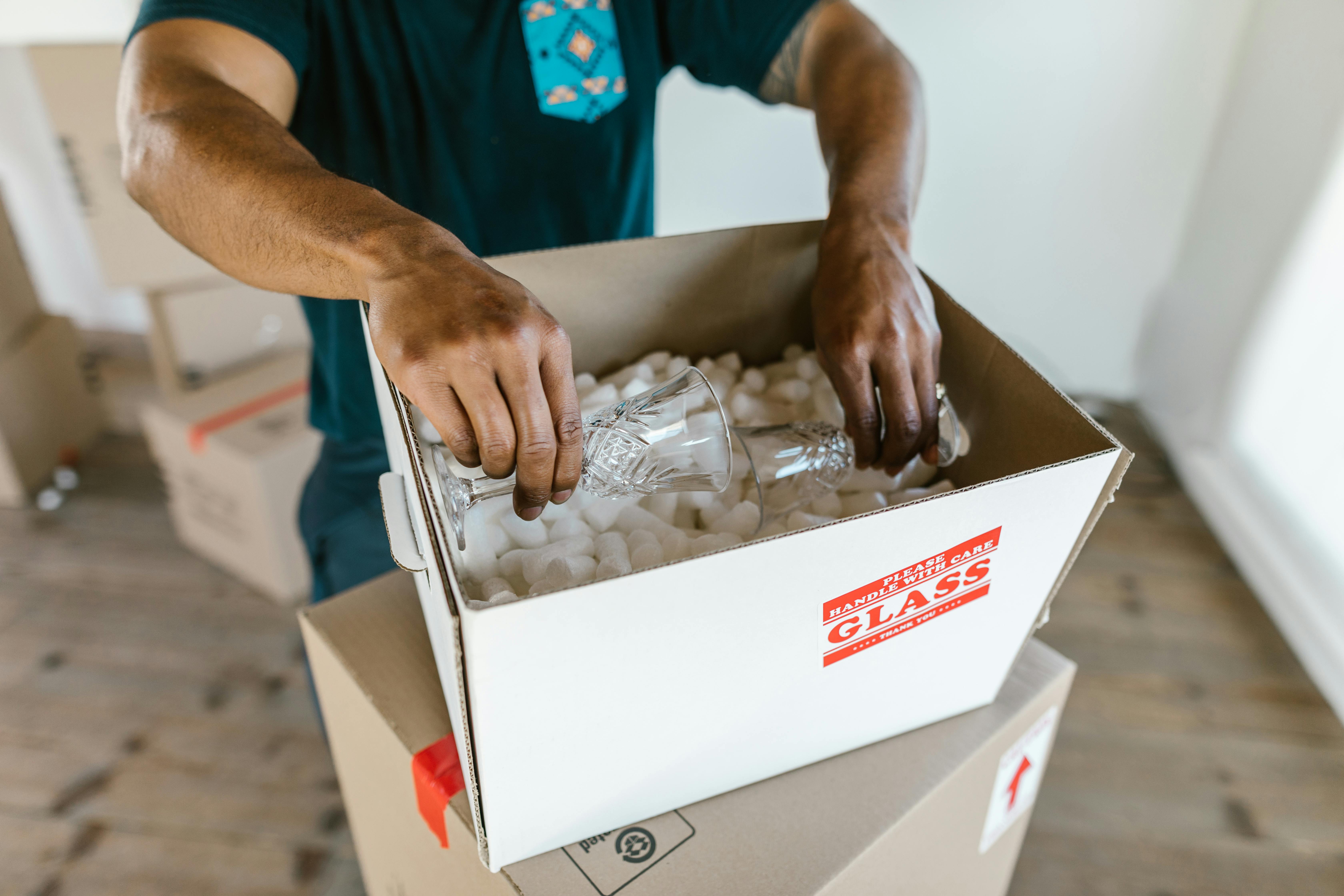Shipping a fragile item internationally can be a nerve-wracking experience. Whether it's a family heirloom, a delicate piece of art, or an electronic device, the thought of it passing through multiple handling hubs and varying conditions is enough to make anyone anxious.
The secret to success isn't just about using enough tape—it's about a systematic approach to creating a fortress around your item. We'll share professional techniques to ensure your fragile items arrive at their destination in one piece.
The Golden Rule of Fragile Shipping
Assume your package will be dropped, stacked under heavy boxes, and experience temperature changes. Your packaging shouldn't just protect against a gentle ride; it must withstand the rigours of the global logistics chain.
Step 1: Gather the Right Materials (Don't Skimp Here!)
Using the correct materials is 80% of the battle. Avoid repurposed grocery boxes and flimsy packing peanuts alone.
You will need:
-
High-Quality Boxes: A brand-new, double-walled corrugated cardboard box is ideal. It must be large enough to accommodate your item plus at least 2-3 inches of cushioning on all sides.
-
Cushioning Materials: Choose from bubble wrap, foam sheeting, inflatable air cushions, or packing paper. Avoid using newspaper as it can transfer ink and doesn't provide consistent cushioning.
-
Inner Boxes (The "Triple-Box" Secret): For extremely fragile items like electronics or glassware, having a series of nested boxes is a pro-level move.
-
Strong Packing Tape: Use plastic packing tape that is at least 2 inches wide. Do not use masking tape, cello tape, or string.
-
Permanent Markers for labelling.
-
Filler Material: For filling empty spaces inside the box (e.g., loose-fill foam peanuts or crumpled paper).
Step 2: The Packing Process: A Step-by-Step Breakdown
Step 2.1: Prepare the Item Itself
-
Clean and Dry: Ensure the item is clean and completely dry to prevent moisture damage.
-
Disassemble if Possible: Remove batteries, detachable cords, and shelves. Wrap each piece individually.
-
Protect Edges and Corners: Use corner protectors or extra bubble wrap on the most vulnerable parts of the item.
Step 2.2: The First Layer of Defence
Wrap the item thoroughly with a cushioning material like bubble wrap (use the large-bubble variety for better shock absorption). Secure the wrap with tape, ensuring it doesn't stick directly to the item's surface.
Step 2.3: The Pro's Choice: The Triple-Box Method (Highly Recommended)
This is the gold standard for shipping high-value electronics, ceramics, and fine art.
-
Inner Box: Place the wrapped item in a snug-fitting box. Fill any gaps with crumpled paper to prevent movement.
-
Middle Box: Place the sealed inner box into a larger box, ensuring at least 2 inches of space on all sides. Fill this space with a thick layer of cushioning material like foam sheeting or bubble wrap.
-
Outer Box: Finally, place the middle box into your main shipping box. Again, ensure there is ample cushioning on all sides.
This method creates multiple layers of shock absorption, dissipating impact energy before it reaches your fragile item.
Step 2.4: Securing the Item in the Box
-
The "Shake Test": Once your item is cushioned inside the box, close the flaps and gently shake the box. If you hear or feel any movement, you need more cushioning. The item must be immobilized.
-
Fill Voids: Use filler material to pack any empty spaces, preventing the item from shifting during transit.
Step 3: Sealing and Labelling Like a Pro
-
Seal the Box: Use the H-tape method. Seal the centre seam and then the ends of the box with strong packing tape, forming an "H" pattern. This provides the strongest seal.
-
Label with Precision: Affix the shipping label clearly on the largest flat surface.
-
Use "Fragile" Labels Wisely: Place multiple "FRAGILE" and "HANDLE WITH CARE" stickers on the top and all sides of the box. While this doesn't guarantee gentle handling, it increases the likelihood. For extra emphasis, you can also write "GLASS" or "THIS SIDE UP" with arrows.
Common Packaging Mistakes to Avoid
-
The "Box-in-a-Box" with No Cushioning: Simply putting a small box inside a larger one with no buffer is a recipe for disaster.
-
Using Weak or Used Boxes: A box that has already made one journey has lost much of its structural integrity.
-
Underestimating Void Fill: Even a centimetre of movement can cause damage over a long journey.
-
Taping Directly to the Item: Never secure bubble wrap by taping it directly to a delicate surface.
When to Trust the Professionals at SimplyParcel
While this guide equips you to handle most items, some treasures are simply too valuable or complex to risk.
Our professional packing services are your best bet for:
-
High-Value Antiques and Artwork: These require custom crating and specialised materials.
-
Large Musical Instruments: Like pianos or cellos, which need custom-built cases.
-
Complex Electronics: Such as servers or medical equipment.
-
When You Lack the Time or Confidence: Peace of mind is invaluable.
Our team at SimplyParcel uses industrial-grade materials and proven techniques to pack your fragile items securely. We can also advise on customs-compliant labelling for international destinations.
Ready to Ship with Confidence?
Proper packaging is the most effective way to protect your investment during international shipping. By following this pro guide, you dramatically increase the chances of your fragile items arriving safely.
If you want the ultimate peace of mind, let SimplyParcel handle it. Get an instant quote for our shipping services, including professional packing options, and see how affordable safety can be.
 Please Wait...
Please Wait...
